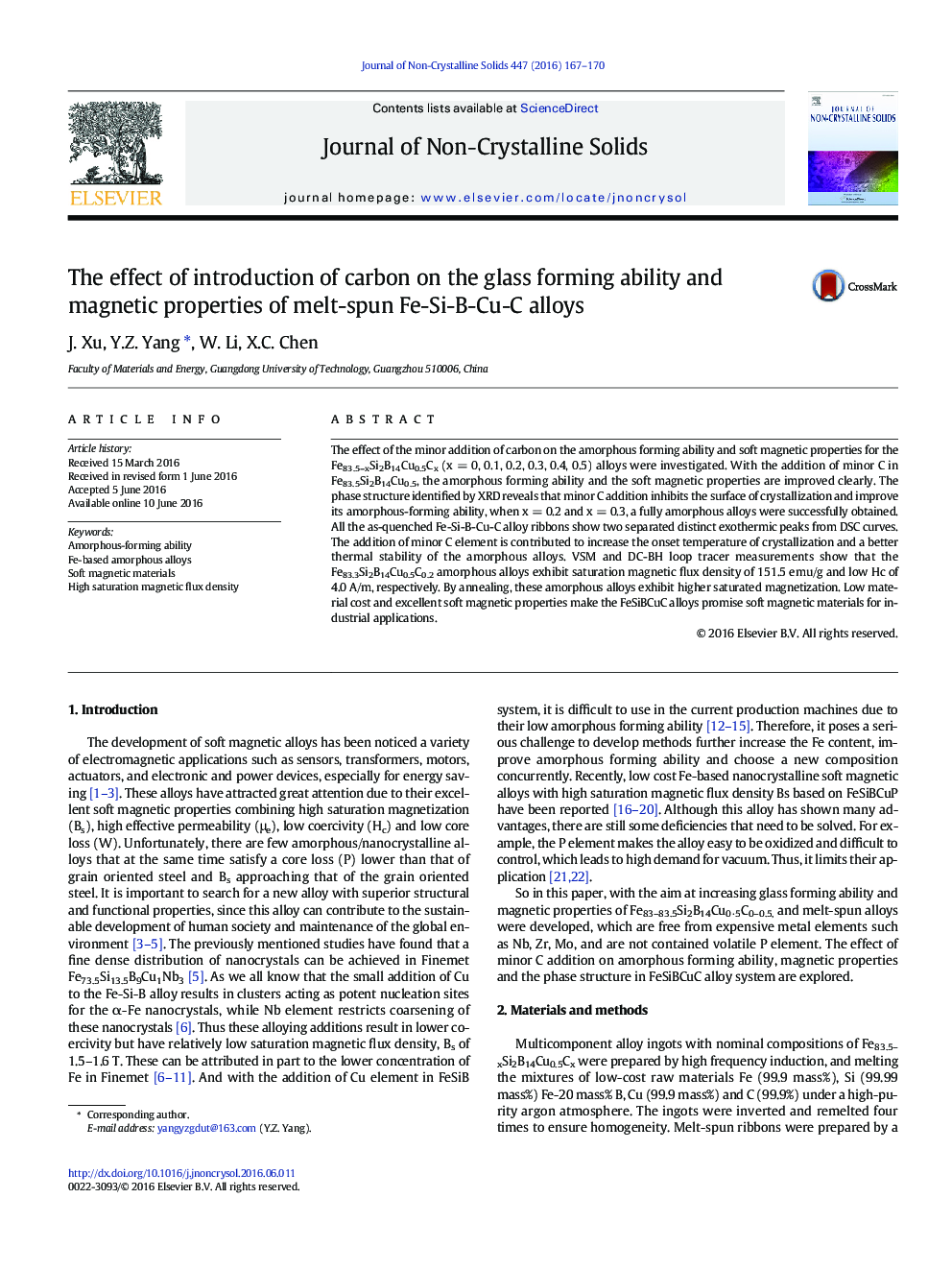| Article ID | Journal | Published Year | Pages | File Type |
|---|---|---|---|---|
| 1480160 | Journal of Non-Crystalline Solids | 2016 | 4 Pages |
•The addition of minor carbon enhances the glass forming ability of the alloy.•The addition of minor carbon exhibits a better thermal stability of the alloy.•The FeSiBCuC alloy exhibit high Ms of 187.5 emu/g and low Hc of 3.8 A/m.
The effect of the minor addition of carbon on the amorphous forming ability and soft magnetic properties for the Fe83.5–xSi2B14Cu0.5Cx (x = 0, 0.1, 0.2, 0.3, 0.4, 0.5) alloys were investigated. With the addition of minor C in Fe83.5Si2B14Cu0.5, the amorphous forming ability and the soft magnetic properties are improved clearly. The phase structure identified by XRD reveals that minor C addition inhibits the surface of crystallization and improve its amorphous-forming ability, when x = 0.2 and x = 0.3, a fully amorphous alloys were successfully obtained. All the as-quenched Fe-Si-B-Cu-C alloy ribbons show two separated distinct exothermic peaks from DSC curves. The addition of minor C element is contributed to increase the onset temperature of crystallization and a better thermal stability of the amorphous alloys. VSM and DC-BH loop tracer measurements show that the Fe83.3Si2B14Cu0.5C0.2 amorphous alloys exhibit saturation magnetic flux density of 151.5 emu/g and low Hc of 4.0 A/m, respectively. By annealing, these amorphous alloys exhibit higher saturated magnetization. Low material cost and excellent soft magnetic properties make the FeSiBCuC alloys promise soft magnetic materials for industrial applications.
